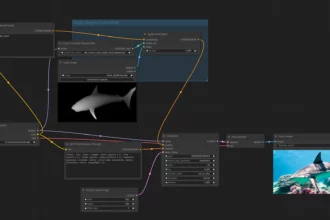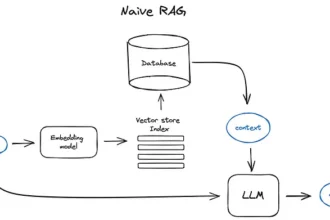Table of Contents
ToggleCohere vs OpenAI: A Comparison of Enterprise Generative AI Providers
Cohere and OpenAI are key players in the enterprise generative AI space, each offering large language models (LLMs) with distinct approaches to market and technological deployment. This article compares their enterprise adoption, technical models, infrastructure, use cases, and strategic positioning to highlight their differences and opportunities for businesses.
Enterprise Adoption Strategies
OpenAI recently launched an enterprise version of ChatGPT, aiming to meet growing business demand for generative AI. However, OpenAI is not first-to-market in this space.
Cohere, based in Toronto with close ties to Google, has already established generative AI solutions for enterprises. Martin Kon, head of business operations at Cohere, emphasizes a fundamental difference in approach:
- OpenAI encourages customers to bring their data to OpenAI’s models, primarily on Microsoft’s Azure cloud.
- Cohere offers to bring their models directly into the customer’s preferred environment, allowing data to stay in controlled infrastructures.
This approach addresses enterprise concerns around data privacy and cloud lock-in.
Company Background and Leadership
Cohere was founded by former Google Brain researchers Aidan Gomez and Nick Frosst. Google Brain pioneered the transformer architecture crucial to NLP models like ChatGPT.
Ivan Zhang co-founded Cohere to commercialize these innovations. Martin Kon, who joined recently, was a YouTube veteran and drives Cohere’s business growth.
Cohere reports significant momentum with 65% month-on-month growth in API calls and developer adoption.
Technical Comparisons
Model Types and Sizes
- Cohere offers two main types of LLMs: generation models for content creation and representation models for language understanding tasks like sentiment analysis.
- Models come in sizes from small to xlarge, balancing speed and capacity.
- Cohere’s largest xlarge model has 52 billion parameters, per Stanford’s HELM benchmark.
- OpenAI’s largest GPT-3 davinci model has 175 billion parameters.
Performance Benchmarks
- Cohere claims its xlarge model outperforms larger models like GPT-3, Jurassic-1 Jumbo, and BLOOM in specific accuracy tests.
- OpenAI’s newer GPT-3.5 models (text-davinci-002 and -003) rank higher than Cohere on Stanford’s HELM accuracy metric.
- Cohere updates its Command model weekly, improving responsiveness to instruction-like prompts.
- OpenAI describes davinci as adept at complex intent recognition and summarization.
Enterprise Use Cases
Early generative AI practical applications focus on content generation and semantic search over private data. Both companies support contextual search within organizations:
- Search and classify internal documents, customer call transcripts, videos, and emails.
- Implement semantic, contextual search engines tailored to enterprise data.
- Deploy dialogue interfaces enabling conversational queries over private data safely.
Example:
A retailer can query business metrics segmented by countries or business units, receiving real-time answers from internal data without sending sensitive information externally.
Customers can interact with AI assistants to obtain current policies or FAQs instantly.
Infrastructure and Partnerships
Running LLMs requires massive computational resources. Cohere partners closely with Google:
- They use Google’s Tensor Processing Units (TPUs), holding a major consumer position outside Google itself.
- Base model training takes 4-6 weeks on these powerful machines.
- Cohere’s Command model fine-tunes nightly on smaller, specialized datasets.
OpenAI primarily utilizes Microsoft Azure as their cloud partner, leveraging Azure’s infrastructure capabilities for training and deployment.
This leads to differing preferences among enterprises:
- Azure-centric companies are naturally inclined toward OpenAI.
- Google Cloud customers may favor Cohere’s offerings.
- Enterprises wanting cloud-agnostic solutions might prefer Cohere’s flexible deployment.
Market and Strategic Positioning
The enterprise AI market segments along existing cloud ecosystems:
- OpenAI benefits from Microsoft’s broad Azure adoption, deep integration, and developer tools.
- Cohere leverages Google’s TPU infrastructure and flexible model deployments to appeal to customers wary of vendor lock-in.
Both companies address the growing need for businesses to gain competitive advantages with generative AI while keeping control over data security.
Key Takeaways
- Cohere offers model deployment flexibility, allowing enterprises to keep data in preferred environments, unlike OpenAI’s data-to-cloud model.
- Cohere’s models focus on both generation and understanding, with competitive accuracy despite fewer parameters than OpenAI’s largest models.
- OpenAI’s GPT-3.5 models currently lead in accuracy benchmarks but are tied to Azure cloud infrastructure.
- Enterprise use cases center on semantic search, content generation, and secure conversational AI integrated with private data.
- Partnerships influence choice: Microsoft customers lean to OpenAI; Google Cloud customers and cloud-agnostic firms might prefer Cohere.
Cohere vs OpenAI: The Battle of AI Titans in Enterprise NLP
When it comes to choosing between Cohere and OpenAI for enterprise AI needs, the answer boils down to your business’s priorities around model accessibility, accuracy, data security, and cloud preferences. Both companies lead in delivering natural language processing (NLP) solutions, but they approach the AI landscape with distinct philosophies and strengths that impact how enterprises adopt their technologies.
Let’s dive deep into the inner workings of this AI face-off—from their technological guts to their business strategies, pricing models, and real-world applications. Spoiler alert: Whether you want a Google-friendly AI partner or you swear by Microsoft’s Azure ecosystem, you’ll find something compelling in either camp.
Who Are They Anyway? Company Shorts
Cohere is the fresh Canadian upstart, born in 2019, but backed by some AI rockstars from Google Brain. Founders Aidan Gomez and Nick Frosst helped birth the transformer architecture—the core magic behind today’s NLP explosion, including OpenAI’s ChatGPT. Cohere’s competitive edge? Its NLP models can be brought to wherever your data lives, keeping things cozy inside your preferred environment.
OpenAI, on the other hand, is the Silicon Valley superstar and visionary aiming for artificial general intelligence (AGI). OpenAI burst on the scene with GPT-3 and now GPT-4, setting the benchmark for high-stakes AI tasks. Their mission is broad and noble: democratizing AI to benefit all humanity. Naturally, their models currently operate best inside Microsoft’s Azure — a fact that shapes their enterprise relationships.
Enterprise Adoption: First the Follow, Then the Lead?
OpenAI recently launched an enterprise version of ChatGPT, but Cohere had already entered the enterprise AI race earlier, especially championed by ties to Google. Martin Kon, Cohere’s business ops lead and a YouTube alumnus, highlights a fundamental difference: “OpenAI wants you to bring your data to their models, exclusive to Azure. Cohere wants to bring our models to your data, in whatever environment you feel comfortable in.”
This data sovereignty is crucial for enterprises weary of cloud lock-ins and privacy pitfalls. Many companies don’t want their sacred data floating into OpenAI’s or Microsoft’s cloud. Instead, they prefer AI solutions that come to them, aligned with their internal security and compliance frameworks. Cohere’s 65% month-on-month growth in API calls and developer engagement signals this preference resonates in many quarters.
The Tech under the Hood: Parameters, Performance & Models
Both are masters of Large Language Models (LLMs), but with distinct flavors. Cohere offers two major model classes: generation (think ChatGPT-style content creation) and representation (using AI to understand and analyze language, like sentiment analysis). They provide these in small, medium, large, and extra-large versions to balance speed and complexity.
| Feature | Cohere | OpenAI |
|---|---|---|
| Largest Model Parameters | 52 billion (xlarge) | 175 billion (GPT-3 davinci) |
| Latest High Accuracy Models | Command (beta, weekly improved) | GPT-3.5 series (text-davinci-002 & 003), GPT-4 |
| Model Focus | Tailored, task-specific fine-tuning | Complex reasoning and broad generalization |
| Deployment Style | Models brought to customer environment | Data brought to Azure-hosted model |
Despite having fewer parameters, Cohere claims their xlarge model’s accuracy surpasses several 175B-parameter models like GPT-3 davinci. Given parameters don’t equate to real-world performance at all times, this is notable. Yet, OpenAI’s GPT-3.5 and GPT-4 models win the crown on HELM accuracy, showcasing advances surpassing older iterations. Cohere’s weekly re-tuning of their Command model aims to close any performance gap fast.
Practical Uses: AI That Talks Your Language and Business
Imagine running a multinational retailer and wanting instant answers about your latest sales in Bolivia, but broken down by wholesale, not retail. With Cohere, you query your own internal data subtly—your AI helps you navigate mountains of documents, call transcripts, emails, and even video chat text without exposing sensitive info to outsiders. The dialogue layer, still in beta, promises smart, conversational interaction much like ChatGPT, tailored specifically to your datasets.
OpenAI offers compelling tools for text generation, translation, complex question-answering, and summarization. Their GPT-4 and Codex models assist developers, automate workflows, and empower employees across industries. But currently, interacting with OpenAI’s models means your data often travels to Microsoft’s Azure environment. For some businesses, that’s a non-starter.
Why Hardware and Partnerships Matter
Training billion-parameter models is not for the faint-hearted or light-pocketed. Cohere leverages a strategic partnership with Google and accesses exclusive Tensor Processing Units (TPUs). This enables faster, cost-effective training cycles—base models take four to six weeks while “Command” models can update overnight.
OpenAI relies heavily on Microsoft’s cloud infrastructure, benefiting from the scalability and resources Azure provides. This partnership deeply entwines the OpenAI ecosystem with Microsoft’s cloud customers, capturing a huge share of the enterprise market targeting “Azure-first” organizations.
The Cost Question: AI Doesn’t Come Cheap
- Cohere charges between $2 and $4 to generate one million tokens.
- OpenAI’s GPT-4 runs at steep rates, between $30 and $60 for the same token volume.
Does cheaper mean worse? Not necessarily. Cohere’s pricing aligns with its goal to democratize AI across enterprises of all sizes, especially those cautious about ballooning costs. Meanwhile, OpenAI’s premium price reflects its cutting-edge research and numerous advanced capabilities.
Security, Privacy & Compliance: A Non-Negotiable
In enterprise AI, messing with data privacy is akin to walking a tightrope over a pit of hungry lawyers. Cohere understands this, ensuring compliance with heavy-hitters like SOC2 and GDPR. This gives companies confidence their data stays locked down.
OpenAI’s approach, while offering powerful tools, raises eyebrows for limited transparency on model interpretability and privacy nuances. Data sent to Microsoft Azure undergoes scrutiny, but the sheer complexity of these models makes internal understanding tricky. This sparks debate around user control and data governance.
The Wild Card: User Experience and Challenges
On the rough side, Cohere faces some usability quirks. Users report difficulties interacting with dropdown menus during video calls and glitches in browsers like Safari, particularly when ad blockers are active. Still, the team rapidly re-tunes and improves the models, signaling their commitment to ironing out wrinkles.
OpenAI maintains a smoother user interface-for-developers, but customization options remain limited. Users can’t deeply tweak the model’s behavior or control the data flow beyond platform defaults, locking some enterprises into predefined experiences.
Market Position and Strategy: A Tale of Two Ecosystems
OpenAI is aggressive, pioneering AI with a large footprint and mission to democratize advanced AI. Its partnership with Microsoft locks in a powerful channel but limits flexible deployment options.
Cohere takes a more nuanced route—cutting a niche by offering flexibility to implement models in different cloud or on-prem environments. This appeals to enterprises unwilling to tie their fate to a single cloud titan. It’s a modern “horses for courses” approach where each model ecosystem serves different strategic needs.
Looking Ahead: What’s Next in the AI Arms Race?
Both Cohere and OpenAI are pushing the envelope. Cohere’s weekly model retraining and focus on embeddings tailored to domains promise stronger domain-specific AI applications. OpenAI, with GPT-4 and beyond, continues to show superior accuracy and complex reasoning abilities, gradually broadening its AI horizons.
Understanding which AI fits your business means considering your cloud preferences, data privacy needs, budget, and application requirements. Want a Google-aligned AI partner delivering faster innovation cycles inside your environment? Cohere’s your team. Bet on the absolute cutting-edge with Microsoft Azure backing? OpenAI dazzles there.
Where to Learn More
Eager to deepen your AI know-how? Coursera offers courses on AI and generative AI automation, including deep dives into both OpenAI and Cohere ecosystems. Vanderbilt University’s Generative AI Automation Specialization is a great beginner-friendly choice to understand these cutting-edge tools.
Final Thoughts
In the end, the Cohere vs OpenAI story is not a simple rivalry but a reflection of evolving enterprise needs in AI adoption. It’s about how you handle your data and where your AI lives. Every company is unique. Both AI powerhouses bring tremendous value—your mission is to pick the right AI partner that plays well within your ecosystem and scales with your ambitions. After all, in AI, smart partnerships trump hype every time.
Feeling torn between OpenAI’s dazzling GPT-4 or Cohere’s agile model-in-your-doorstep approach? What exact features or compliance needs tip your scale? The AI showdown only sharpens when you get into the details—and that’s the fun part of innovation!
What is the main difference between Cohere’s and OpenAI’s enterprise AI approaches?
Cohere brings its AI models to a company’s data and preferred environment. OpenAI’s enterprise AI requires companies to send their data to OpenAI’s models, mainly hosted on Azure.
How do Cohere’s model sizes compare to OpenAI’s GPT-3?
Cohere’s largest model has 52 billion parameters. OpenAI’s GPT-3 davinci model has 175 billion parameters, making it significantly larger.
Does Cohere’s model perform better than OpenAI’s GPT-3?
Cohere’s xlarge model shows higher accuracy than GPT-3 davinci in some tests. But OpenAI’s newer GPT-3.5 models rank higher than Cohere in accuracy.
What are common enterprise use cases for Cohere’s AI?
Enterprises use Cohere for semantic search across internal documents, sentiment analysis, and conversational AI to access private data without sharing it externally.
How does Cohere support cloud and infrastructure needs compared to OpenAI?
Cohere partners with Google and supports AI model deployment in customers’ chosen environments. OpenAI mainly operates through Microsoft Azure’s cloud services.
Why might companies choose Cohere over OpenAI for AI integration?
Companies wanting flexibility to keep data on their infrastructure or avoid cloud lock-in may prefer Cohere’s model deployment approach.





